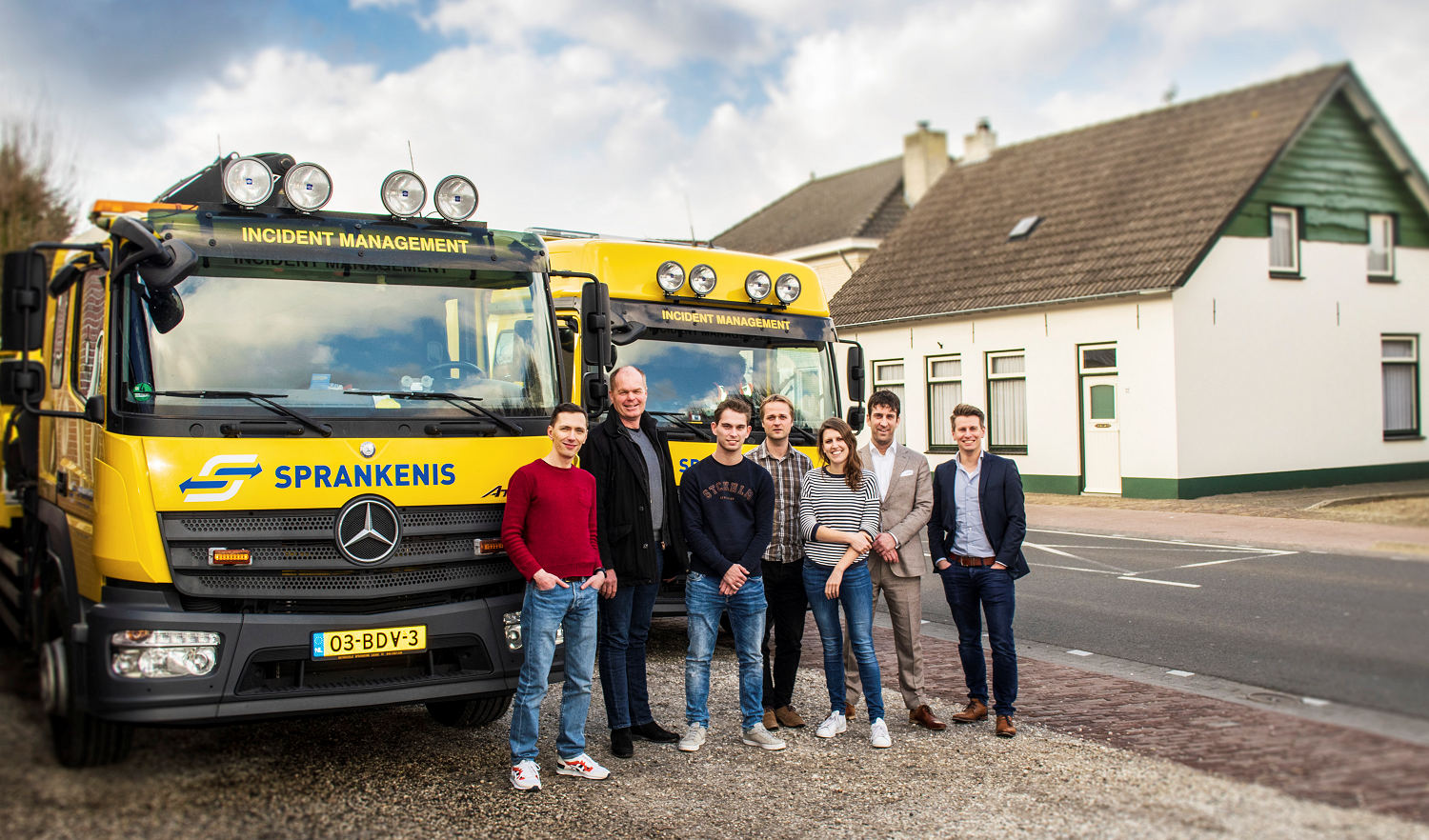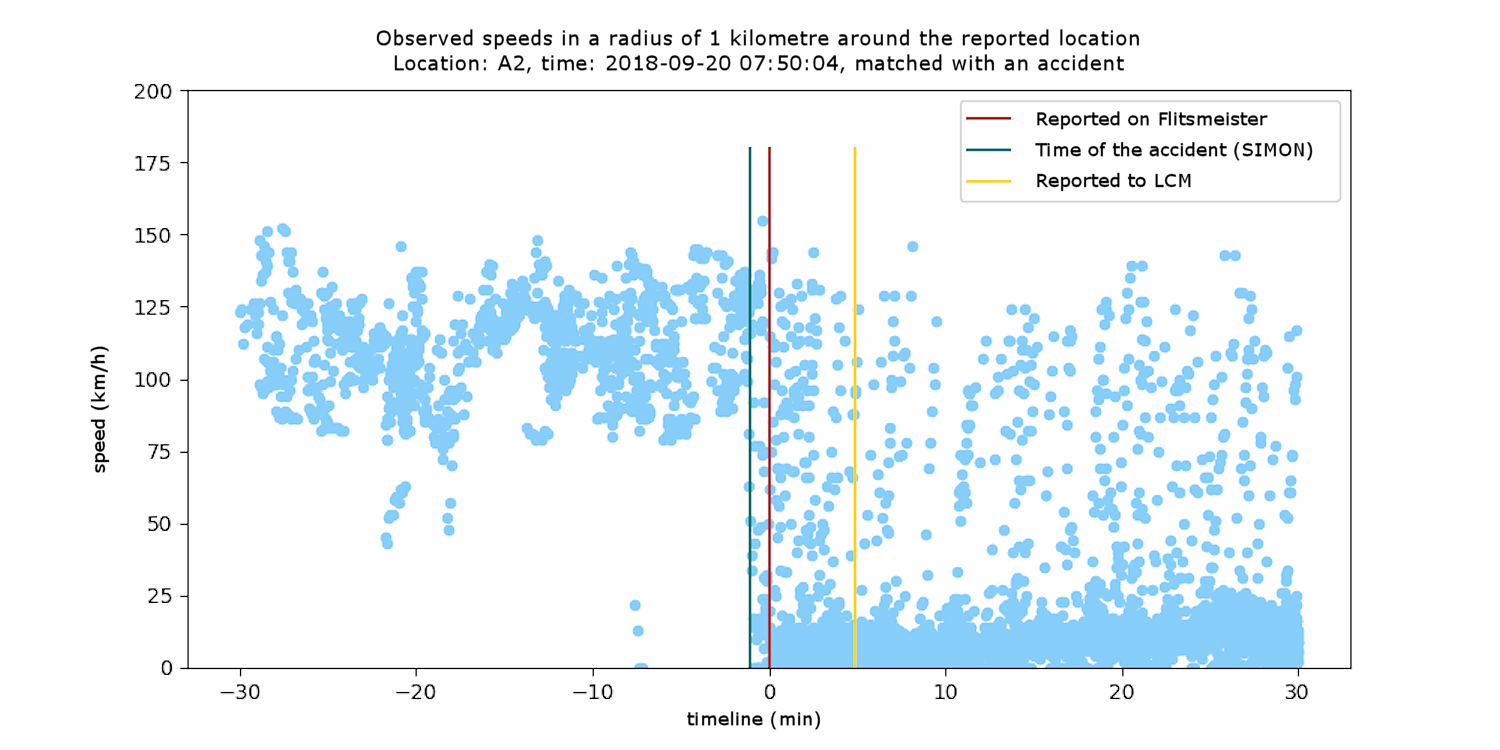Big Brother in Eindhoven
Tuesday 5 March 2019
Since February of this year, certain accidents on motorways are identified by computer rather than the human eye. The Eindhoven-based software company SIMON has developed a system for the electronic detection of accidents (EDO) on behalf of Stichting IMN. The system analyses real-time data about vehicle movements on the road. These so-called floating car data are reviewed for patterns that indicate the occurrence of an accident, for example an abrupt and long-lasting fall in traffic speed. If the identified signal is sufficiently powerful, a report is sent to the National Central Reporting Point, which then calls in an IM recovery operator. Research has shown that reports generated by EDO arrive at the LCM on average four minutes earlier than reports of the same incident or collision from the police or traffic control centre.

The SIMON team visiting IM recovery operator Sprankenis in Leende (from left to right: Andrey Kateshov, Gerjo Sprankenis, Mike Evers, Erik van Breusegem, Moira Berens, Rudy van Haandel, Jaap Evertse)
For the time being, EDO is being deployed as a pilot. This is the follow-up to a trial in 2017 involving accident reports by users of Flitsmeister. In that trial, accidents reported by at least three road users were converted by the LCM into an order for the recovery operator. That trial produced mixed results. In many cases the Flitsmeister reports were received minutes earlier than reports of the same incident from other sources. However, numbers of false alarm were so high that the decision was taken to halt the trial, in 2018.

Plot of the floating car data around an accident report in Flitsmeister on 20 September 2018 on the A2 motorway at hectometre marker 203.4 Right
In the period following the halting of the trial, Stichting IMN went in search of a better solution. That solution was found with SIMON, a company specialising in the development of self-learning systems. Together with Flitsmeister and Stichting IMN, SIMON developed the EDO system. EDO receives accident reports from Flitsmeister as well as the floating car data of all Flitsmeister users in the vicinity of a report. Based on that data, it is possible to determine whether there truly is an incident. Only then is the message passed on to the LCM.
Film of the floating car data close to the same incident on the A2
The floating car data can be processed into a film of the reported incident. The film shows exactly what is happening on the road at the moment the accident is reported. EDO then electronically processes that information to assess the reliability of the report. This means that for the time being, EDO is reliant on the visual observations of road users. The Flitsmeister message serves as a trigger to analyse floating car data at a specific location at a particular time.
The use of that trigger is the first step in the development of EDO. In the future, it should be possible to detect incidents before they have been reported by a road user. Most road users do not report accidents. Many minutes can pass before an accident is reported. Those minutes could be saved if EDO targets floating car data directly.
So far, the results of the pilot using EDO have been satisfactory. Time savings per report are considerable, and the risk of a false alarm has been reduced to an acceptable level. Over the coming months, the electronic detection of accidents will be fine tuned and speeded up even further. A decision will be taken in the summer on whether EDO will become a regular operational element at LCM.